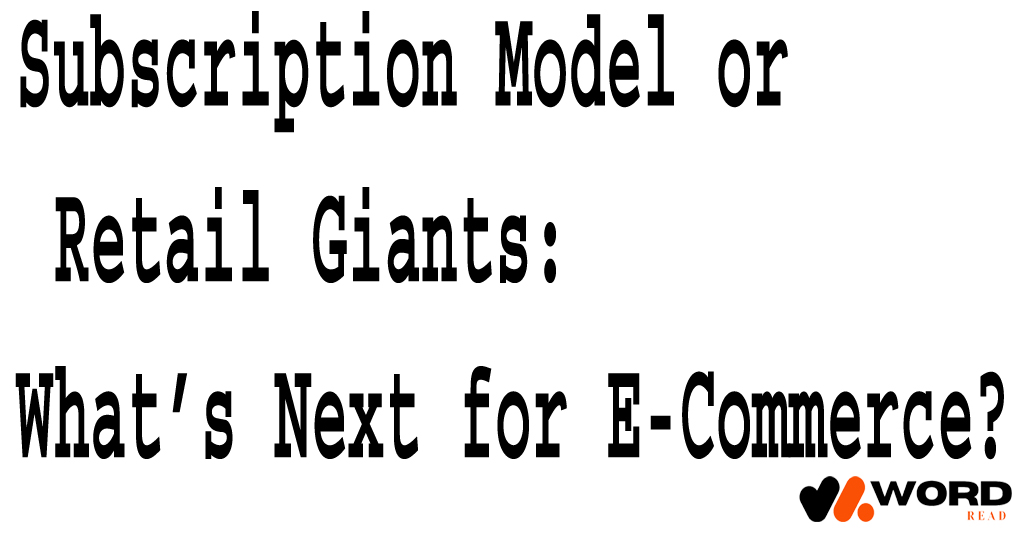Subscription services and traditional retail are the two main methods by which consumers can obtain everything in the modern world. Businesses constantly look for innovative methods to connect with consumers. It keeps their interest in the constantly changing consumer products market.
The emergence of subscription services provides customers with a constant and usually carefully chosen supply of goods. It has been one of the biggest changes in recent years. The traditional retail model has been in place for centuries challenged by the current one-time purchase model. It is important for organizations and consumers to comprehend the distinctions and advantages of each model as they each have distinct advantages and disadvantages.
Subscription Services Vs Traditional Retail:
A business model that provides clients with continuous access to goods or services in return for a regular payment is known as a subscription service. Subscription boxes like Birchbox or Dollar Shave Club are examples of apparent goods. It also includes monthly or yearly fees for access to digital material like Netflix or Spotify. Subscription service promotes customer loyalty and generates constant revenue for companies through the sale of a constant supply of benefits.
Traditional retail usually involves a single purchase of an item or service. Consumers make one-time payments for the things they desire or need, with no commitment to keep paying them. This approach has been normal and is still in use today in numerous industries for centuries. It is used in companies where clients visit a store to make a purchase. Although traditional retail has their own advantages but on the other hand, subscription services usually provide a more consistent revenue stream and long-term consumer involvement.
Drawbacks of Subscription Services:
Subscription services offer convenience and personalization but can lead to commitment stress. Customers may become overwhelmed by the constant supply of goods which leads to dissatisfaction. Subscription-based businesses face challenges in customer dissatisfaction. Many subscribers cancel subscriptions after the initial offer or lose interest. This can lead to increased operational costs and increased customer dissatisfaction. Companies must invest in retention strategies and address cancellation hurdles to maintain customer loyalty.
Subscription services have little flexibility and lower customer satisfaction due to their fixed calendars and selected options. They constantly depend on external logistics companies which results in delays and higher expenses. Customers also have to manage several subscriptions at once which is another problem known as subscription overload.
In addition, it makes it difficult to keep track of expenses and places extra pressure on finances causing confusion and unexpected costs. Subscription services are also more costly over time because they frequently depend on outside shipping companies.
Drawbacks of Traditional Retail:
Traditional retail stores have several disadvantages such as inconvenience, geographical limitations, inventory limitations, higher operational costs and complex inventory management. The time and effort required to visit and shop in a physical store is difficult, especially for busy consumers.
Additionally, physical stores have set hours and limit access to certain products or brands. Geographical limitations also have limited access to certain products or brands. On the other hand, inventory limitations also lead to customer frustration. High operational costs such as rent, utilities, staffing, and inventory management make it difficult for traditional retailers to compete with online mode.
Traditional retail faces environmental challenges due to larger ecological impact, frequent markdowns and excessive waste. Online shopping with efficient logistics has a lower environmental impact. Economic crises can lead to store closures and job losses, while e-commerce and subscription services are more adaptable due to lower costs and have easier scaling response on demand.
Which model is the future of E-commerce in 2024?
The future of e-commerce is set to determine a hybrid model that combines the best aspects of traditional retail and subscription services. This strategy considers the current demands of customers who seek variety and comfort. When it comes to continually providing chosen products, subscription services are excellent at building customer loyalty through customization and accessibility. A lot of customers still value the immediate satisfaction and physical nature of traditional retail, where they can examine, feel, and contrast items before selecting to buy.
The mixed model of e-commerce combines subscription services and traditional retail. It allows consumers to shop online, in-store and at home. Advanced technologies like artificial intelligence enhance personalization and sustainability. This dynamic marketplace offers a variety of shopping preferences and ensures a wide range of shopping experiences.
